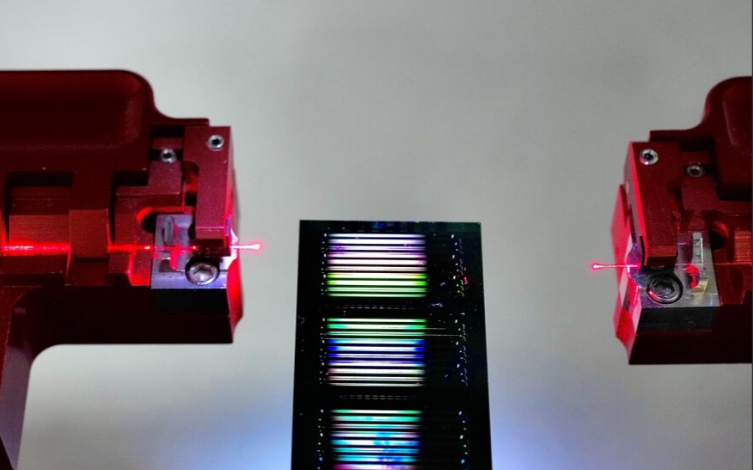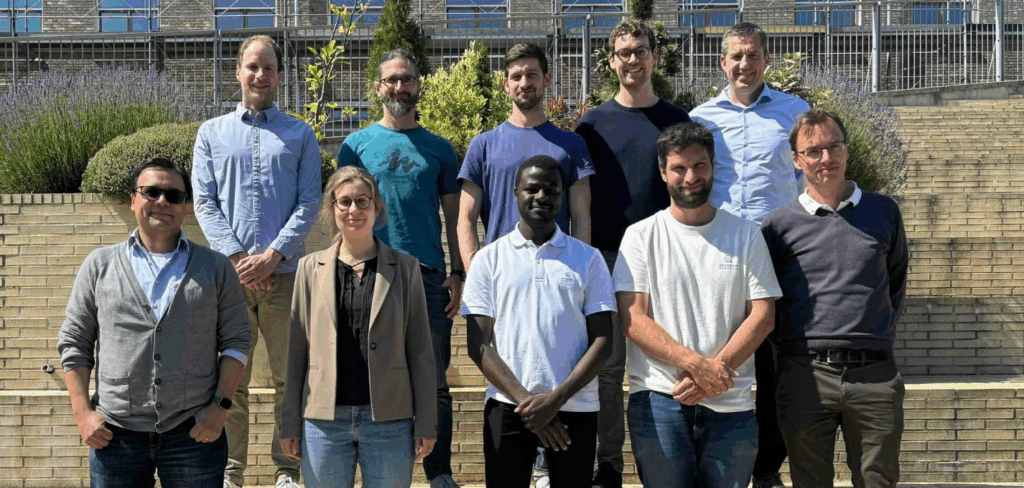Insider Brief
- University of Sydney researchers eliminated a key noise source in chip-scale Brillouin lasers by adding nanoscale Bragg gratings to block parasitic modes.
- Their photonic bandgap approach suppresses Brillouin cascading, enabling higher output power and a cleaner, ultranarrow laser spectrum.
- The reconfigurable gratings allow chip lasers to switch between low-noise single-mode and multi-mode operation without refabrication.
PRESS RELEASE — Researchers at the University of Sydney have cracked a long-standing problem in microchip-scale lasers by carving ‘tiny speed bumps’ into the devices’ optical cavity in their quest to produce exceptionally ‘clean’ light. This exquisitely narrow spectrum light could be used in future quantum computers, advanced navigation systems, ultra-fast communications networks and precision sensors.
In a new study, the team shows how to eliminate a critical source of noise in Brillouin lasers, a special class of light source known for its extraordinary purity, producing an ultranarrow spectrum that is almost a perfect single wavelength (or colour) of light.
Light produced from sources like a lightbulb have a broad wavelength spectrum and are fine for everyday use but are too ‘noisy’ for precision scientific purposes, where lasers are needed.

Brillouin lasers generate light so pure that they can be used in optical atomic clocks, which only lose seconds over many thousands of years. But until now, their potential has been constrained by a phenomenon called Brillouin cascading, in which ‘parasitic modes’ of light emerge and degrade performance.
“Brillouin lasers are among the most coherent light sources, and you can make them at chip-scale,” said lead author Ryan Russell, a PhD candidate at the University of Sydney Nano Institute and School of Physics.
“But once you try to increase their output power, they tend to break up into multiple parasitic modes. These extra modes add noise and steal energy from the fundamental mode, which is the one you want to use. For many real-world applications, that’s quite a problem.”
Speed Bump For a Laser
To solve the problem, the Sydney team turned to “photonic bandgap engineering”. By burning in nanoscale features – more than 100 times smaller than a human hair – directly inside the laser’s optical cavity, the researchers created a precise “dead zone” that blocks the formation of parasitic modes at their origin, while not impeding the primary mode.
These features are called ‘Bragg gratings’, named after William and Lawrence Bragg, an Australian father and son scientific team who together won the 1915 Nobel Prize in Physics.
“Think of it as carving tiny speed bumps into the light’s racetrack, preventing the noisy by-products from forming,” said co-author Dr Moritz Merklein, also at Sydney Nano and a researcher in the ARC Centre of Excellence in Optical Microcombs for Breakthrough Science (COMBS).
“In simple terms, we’ve learned how to tame the cascade before it even begins,” Dr Merklein said. “The photonic bandgap removes the density of states that these parasitic modes rely on to operate. Without available states, the parasitic processes just cannot take place. It’s like trying to shout into the vacuum of space – the sound has nowhere to go.”

The paper is published in APL Photonics.
The results are striking. When the Bragg grating induces the dead zone, the team observed a six-fold increase in the minimum threshold for Brillouin lasing. This is the minimum energy required to excite laser emission. With cascading inhibited, the researchers measured a 2.5-times boost in fundamental laser power, directly demonstrating how the method can unlock better performance.
No Need To Refabricate Devices
Importantly, the Bragg gratings are reconfigurable: they can be written, erased and re-tuned after creation using only laser light, without needing to refabricate the device. This allows chip-scale lasers to be programmed on demand for low-noise ‘single-mode’ or cascaded ‘multi-mode’ operation.
“This is not just a fix for Brillouin lasers,” Mr Russell said. “It’s a general framework for controlling optical processes on photonic chips.”

This method for controlling the light flowing through photonic chips, should lead us to cleaner sources of quantum light and frequency comb lasers.
These have emerging applications in communications and advanced navigation technology such as GPS.
Research group lead at the University of Sydney and COMBS Chief Investigator, Professor Ben Eggleton, said: “The ability to engineer the density of states inside a resonator opens the door to totally new classes of light sources and other advanced photonic technologies.”
Dr Merklein said: “As we continue to build more complex optical systems onboard miniature chips, having this new degree of control is critical. It lets us push these devices into regimes that were previously off-limits.”
The research highlights Australia’s leadership in integrated photonics and provides a new path toward ultra-stable, high-power and low-noise chip-scale lasers for the next generation of quantum and communication technologies.

















